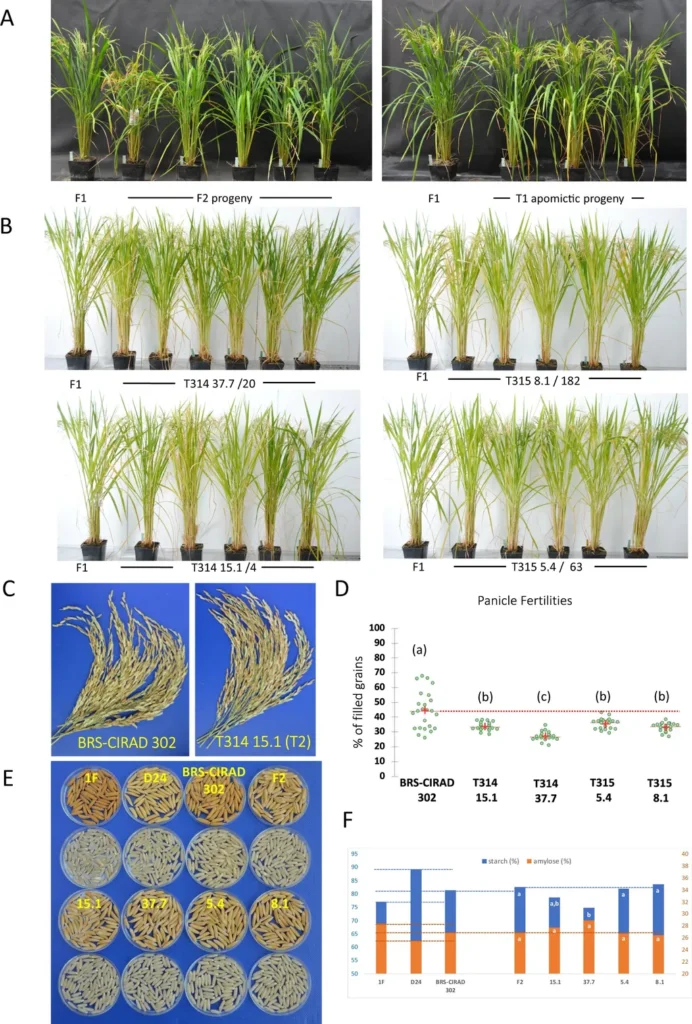In the heart of China, a groundbreaking discovery is poised to revolutionize the way we think about rice cultivation and, by extension, the global food and energy sectors. Researchers at the State Key Laboratory of Rice Biology and Breeding, led by Dr. Jie Xiong, have successfully induced synthetic apomixis in hybrid rice using a gene from the hawkweed plant, PpPAR. This development, published in *Plant Communications* (which translates to *Plant Messages* in English), could have profound implications for agriculture and energy production.
Apomixis, a form of asexual reproduction in plants, allows seeds to develop without fertilization, essentially cloning the maternal plant. This process has long been a holy grail for plant breeders, as it could enable the rapid and consistent production of high-yielding hybrid crops. Dr. Xiong and his team have taken a significant step toward making this a reality.
“Our research demonstrates that the PpPAR gene from hawkweed can induce synthetic apomixis in rice,” Dr. Xiong explained. “This means we can now produce seeds that are genetically identical to the parent plant, maintaining the desirable traits of hybrid rice without the need for repeated breeding.”
The commercial impacts of this discovery are substantial. Hybrid rice varieties are already known for their high yields and robust performance, but their widespread adoption has been hindered by the complexity and cost of producing hybrid seeds. Synthetic apomixis could streamline this process, making it easier and more affordable for farmers to access these high-performing varieties.
For the energy sector, the implications are equally significant. Rice is a staple crop in many parts of the world, and improving its yield and resilience can contribute to food security. This, in turn, can stabilize food prices and reduce the economic burden on consumers. Additionally, as the demand for bioenergy continues to grow, having a reliable and high-yielding source of biomass becomes increasingly important. Rice, with its high biomass production potential, could play a crucial role in meeting this demand.
Dr. Xiong’s research is not just a scientific breakthrough; it’s a beacon of hope for a future where food and energy security are more achievable. As the world grapples with the challenges of climate change and a growing population, innovations like synthetic apomixis offer a glimmer of optimism.
“This is just the beginning,” Dr. Xiong added. “We are excited about the potential of this technology and its implications for agriculture and beyond. Our next steps involve further refining the process and exploring its application in other crops.”
As the world watches, the ripple effects of this discovery are likely to extend far beyond the rice paddies of China. The journey to extend Mendel’s legacy continues, and the future of agriculture and energy looks brighter than ever.

